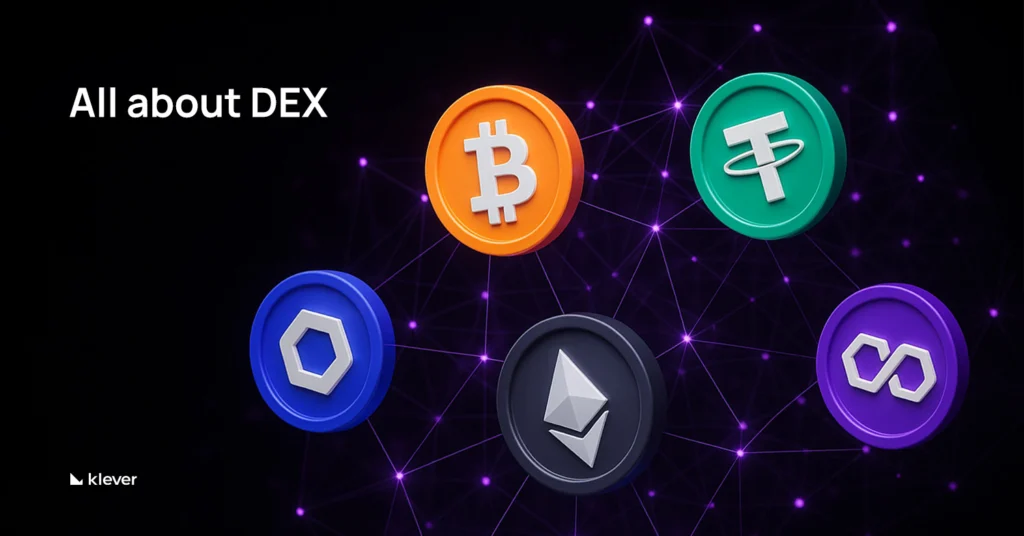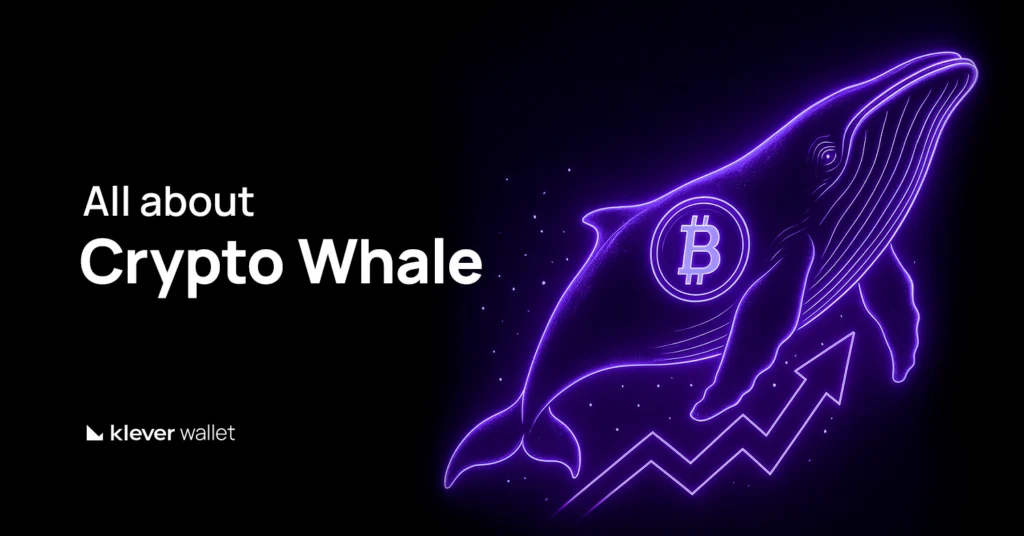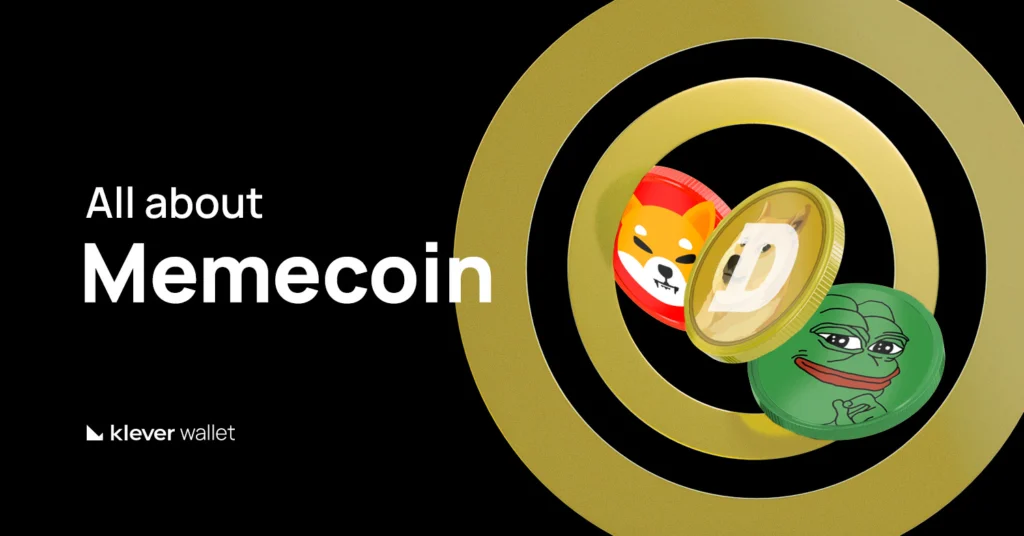
Every day, more people discover that it’s possible to trade cryptocurrencies without relying on traditional exchanges. In this new landscape, DEXs — decentralized exchanges — put users in full control of their assets.
They’re the core of the DeFi (Decentralized Finance) ecosystem, enabling direct wallet-to-wallet trades secured by code — with no intermediaries involved.
With the rise of protocols like Uniswap, PancakeSwap, and 1inch, DEXs are transforming how the crypto market operates — combining freedom, transparency, and technology.
In this article, you’ll learn what a DEX is, how it works, its main models, advantages, risks, and how to start using one safely.
What Is a DEX (Decentralized Exchange)?
A DEX (Decentralized Exchange) is a platform that allows cryptocurrency trading without intermediaries — meaning, without centralized custody. Instead of depositing funds into a traditional exchange (CEX), users interact directly with smart contracts that automatically and securely execute asset swaps.
DEXs are an essential part of the DeFi ecosystem, emphasizing user autonomy, privacy, and security.
How Does a DEX Work?
Transactions on a DEX take place directly on the blockchain through open protocols that ensure transparency, security, and automatic execution of trades.
Smart Contracts and Self-Custody
In a DEX, trading occurs through smart contracts that receive users’ tokens and execute swaps automatically. The user retains full control of their private keys — meaning their funds always remain under their own custody.
Main DEX Models
- AMM (Automated Market Maker): Uses liquidity pools created by users who deposit pairs of tokens (e.g., ETH/USDC). Trades follow mathematical formulas — such as x × y = k — that automatically adjust prices according to the pool’s balance. Examples: Uniswap, PancakeSwap.
- Decentralized Order Book: Allows users to create limit orders with defined prices, which are matched on-chain or on Layer 2 networks. It offers greater price control and strategy options but requires higher liquidity. Example: dYdX v4.
- DEX Aggregators: Compare prices and liquidity across multiple DEXs, splitting orders between them to secure the best rate and minimize slippage. Ideal for optimizing swaps efficiently. Examples: 1inch, Matcha, Paraswap.
Advantages and Disadvantages of DEXs
Main Advantages
- Full control of your assets (no need to trust third parties)
- Complete transparency — everything is recorded on the blockchain
- No KYC requirement in most DEXs
- Global, permissionless access
- Opportunity to earn as a liquidity provider (LP)
Risks and Disadvantages
- Smart contract bugs (audits are essential)
- Low liquidity in less popular trading pairs
- High slippage on large trades
- Vulnerability to front-running and MEV (when bots anticipate transactions to profit from price changes by exploiting the public order of operations on the blockchain)
- Increasing regulatory risk
Popular Examples of DEXs
| Name | Network | Model | Token |
| Uniswap | Ethereum, L2 | AMM | UNI |
| PancakeSwap | BNB Smart Chain | AMM | CAKE |
| Curve | Ethereum | AMM (stablecoins) | CRV |
| dYdX | Cosmos (v4) | Order Book | DYDX |
| 1inch | Multichain | Aggregator | 1INCH |
Difference Between DEX and CEX
The main difference between a DEX (Decentralized Exchange) and a CEX (Centralized Exchange) lies in who controls the funds and how trades are executed.
On DEXs, all transactions occur directly on the blockchain, without intermediaries. The user keeps full control over their assets by connecting their wallet and trading through smart contracts. This setup ensures self-custody, transparency, and security — but can result in lower liquidity and a steeper learning curve for beginners.
On the other hand, CEXs require users to deposit their assets onto the platform, which then holds custody and manages the trades. This model provides higher liquidity, customer support, and a more user-friendly interface, but it demands full trust in the company — which can be vulnerable to hacks, system failures, or restrictions.
| Feature | DEX | CEX |
| Custody | User controls their assets | Platform controls the funds |
| KYC Requirement | Rarely required | Almost always required |
| Fees | Low, vary by network | Depend on volume and trade type |
| Liquidity | Depends on pair and DEX | Generally higher |
| Centralization | Decentralized (on-chain) | Centralized (off-chain) |
In summary: DEXs prioritize autonomy and transparency, while CEXs offer convenience and liquidity. The best choice depends on each user’s experience and preferences.
DEX Security: What You Need to Know
Even though DEXs are generally safer because they don’t require third-party custody, they still demand caution from users. Small mistakes can lead to irreversible losses.
- Verify the official website: Always use links confirmed on the project’s official site or social media to avoid fake pages (phishing).
- Check the protocol’s audits: Make sure the code has been reviewed by reputable firms such as CertiK or Hacken, which identify vulnerabilities in smart contracts.
- Choose well-established DEXs: Platforms with a transparent track record and high trading volume tend to be more secure.
- Avoid low-liquidity pairs: The lower the pool volume, the higher the risk of price manipulation and excessive slippage.
- Don’t approve unknown transactions: Always read what your wallet is asking before confirming — suspicious approvals can grant full access to your tokens.
Tip: Tools like DEXTools, DeFiLlama and DefiSafety can help you check volume, security, and platform reliability.
Experience the Power of DEXs with Klever Wallet
DEXs represent a silent revolution in the crypto market. By removing intermediaries, they offer freedom, security, and transparency to users anywhere in the world. However, they also require education and extra attention to technical and operational risks.
If you want to trade tokens with greater control, less reliance on third parties, and direct access to DeFi innovation, learning how to use DEXs safely is essential.
Download Klever Wallet and access DEXs like PancakeSwap, Uniswap, and more — right from your phone.
Frequently Asked Questions (FAQ) About DEXs
1. What exactly is a DEX?
A DEX (Decentralized Exchange) is a platform where users trade cryptocurrencies directly with one another (peer-to-peer) without relying on a centralized intermediary. The trades are executed via smart contracts on a blockchain.
2. How does a DEX differ from a centralized exchange (CEX)?
- Custody: On a DEX, users keep control of their funds via their wallets. On a CEX, the platform holds custody of user funds
- Intermediaries: DEXs remove centralized intermediaries by using smart contracts; CEXs act as intermediaries in trades.
- KYC / Identity Requirements: Many DEXs don’t require KYC, while CEXs typically do.
- Liquidity & Features: CEXs tend to have deeper liquidity and more advanced trading tools (e.g. margin, futures), while DEXs might offer more permissionless access but face liquidity and UX challenges.
3. Are DEXs safe?
Not always — their safety depends on the security of the underlying smart contracts, the reputation of the protocol, audits, and how you interact with them.
Some real risks observed include:
- Unfair trades / MEV & front-running: Bots or actors reordering transactions to extract profit, sometimes causing losses to regular users. Empirical studies found thousands of such “unfair trades” on popular DEXs.
- Honeypot traps: Fraudulent tokens or liquidity pools are set up so users can swap into them, but not swap back, effectively trapping funds.
- Smart contract bugs / exploits: If there is a vulnerability in the contract logic, it can be exploited. No “undo” or customer service like in CEXs.
- Oracle manipulation / price feeds: Some DEXs rely on external price oracles; if those are manipulated, attacks become possible.
4. Which DEX models exist?
- AMM (Automated Market Maker): Uses liquidity pools and algorithms (like x × y = k) for pricing. No traditional order book.
- Order Book DEXs: Users place limit orders, matched either on-chain or via hybrid approaches (some off-chain matching).
- Aggregator DEXs: They split a trade across multiple DEXs to find the best price and minimize slippage.
5. What fees do DEXs charge?
DEXs typically charge a swap fee (for the protocol or liquidity providers) plus blockchain network (gas/transaction) fees. They usually don’t have deposit, withdrawal, or account management fees like many CEXs.
6. Do I need KYC to use a DEX?
Generally, no. Most DEXs allow anonymous trading via wallet connection, without identity verification.
7. How do I choose a safe DEX / how to minimize risk?
Here are practical steps often recommended by experts and community users:
- Check audits and security history: See if the protocol has undergone reviews by recognized firms and whether past exploits exist.
- Use well-established protocols: DEXs with long track records and large user bases tend to be safer.
- Verify contract addresses and official links: Avoid phishing or fake sites.
- Start with small amounts: Test a new DEX with minimal capital before engaging in large trades.
- Avoid low-liquidity pools or unknown tokens: These are more susceptible to manipulation or traps.
- Limit slippage tolerance: Too high slippage increases the chance of getting a bad execution.
- Stay updated: Watch project announcements, audits, and community feedback.
8. What are common mistakes beginners make?
From community discussions and guides:
- Interacting with scam or unaudited pools/token contracts.
- Approving unlimited “allowances” for tokens (giving a contract permission to spend all your tokens).
- Using high slippage settings or failing to check the expected outcome.
- Not confirming they’re on the correct network or using the correct contract address.
- Relying on new or obscure DEXs without research.
9. What’s the largest DEX or how many DEXs are there?
- In 2023, Curve Finance was among the largest by Total Value Locked (TVL), followed by Uniswap.
- There are hundreds of active DEXs across different blockchains.
10. Can DEXs generate revenue or profit?
Yes. They generally earn via swap fees. A portion goes to liquidity providers; some portion may go to the protocol or token holders.




